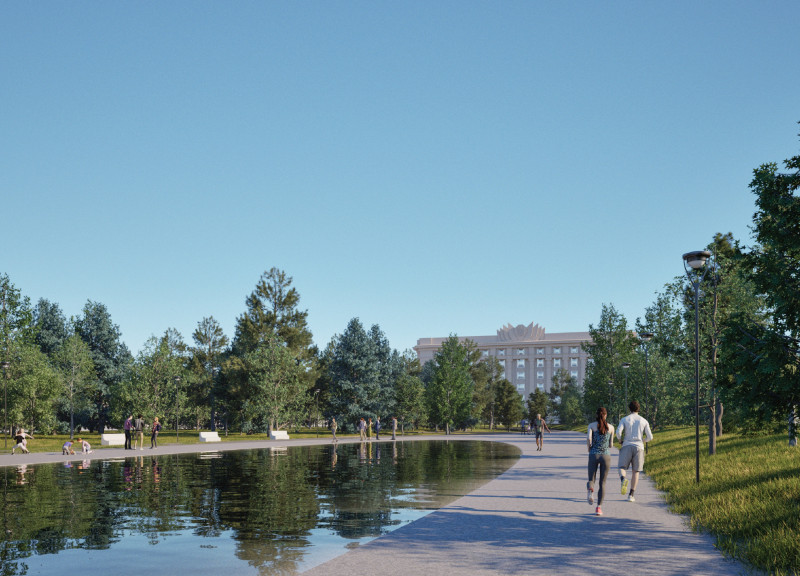5 key facts about this project
At its core, this project represents a thoughtful response to contemporary architectural challenges. It harmonizes the relationship between built and natural environments, emphasizing a commitment to ecological considerations through the strategic use of materials and methods. The design prioritizes environmental sustainability, utilizing resources that are both durable and sustainable to mitigate its ecological footprint. This encompasses the installation of green roofs, the use of recycled materials, and energy-efficient systems that contribute to the overall effectiveness of the project.
Functionality is a critical aspect of the design, with layouts meticulously planned to serve different user groups. Intentional circulation paths guide occupants through the various spaces, ensuring ease of movement while accommodating diverse activities. Key areas within the project include flexible open spaces that can be adapted for multiple uses, which are essential in a fluctuating social landscape, as well as private areas designed for quiet reflection or focused tasks.
In terms of materials, the project boasts an eclectic yet harmonized palette that enhances its aesthetic and functional objectives. The choice of materials reflects a balance of modernity and warmth, incorporating elements such as concrete for structural integrity, glass for illumination and transparency, and natural wood to foster a connection with nature. This combination not only strengthens the visual narrative of the design but also ensures its resilience to the elements.
Moreover, the architectural design employs unique approaches that differentiate it from conventional projects. The integration of biophilic design principles is evident throughout the project, as large windows and strategically placed openings invite natural light and ventilation, creating a comfortable indoor environment while maintaining visual connections to the exterior landscape. The incorporation of green spaces, both within and around the structure, facilitates biodiversity and contributes to the overall health of the ecosystem.
Attention to detail marks the architectural style present in this project. Elements such as texture, scale, and proportion are carefully considered, creating an inviting atmosphere that resonates with users. Architectural sections and plans have been thoughtfully drafted to ensure that every dimension is proportionate and enhances user experience. This careful attention to detail extends to the relationship between different spaces, promoting both interaction and intimacy where necessary.
The architectural design also reflects a deep understanding of cultural and social contexts, with the project incorporating local materials and construction techniques that resonate with the identity of the area. This sensitivity to place is essential in creating a structure that feels both innovative and familiar, allowing it to integrate seamlessly within its surroundings.
This analysis offers only a glimpse into the intricacies of the project’s architectural approach. For those interested in gaining a more comprehensive understanding of the architectural plans, sections, and designs, an exploration of the project presentation will provide a broader perspective on the unique ideas that inform this architecturally significant work. By delving into these details, readers can appreciate the thoughtful processes behind the design and consider how such strategies might influence future architectural projects.


 Chutian Liang,
Chutian Liang,  Zichen Huang
Zichen Huang 























